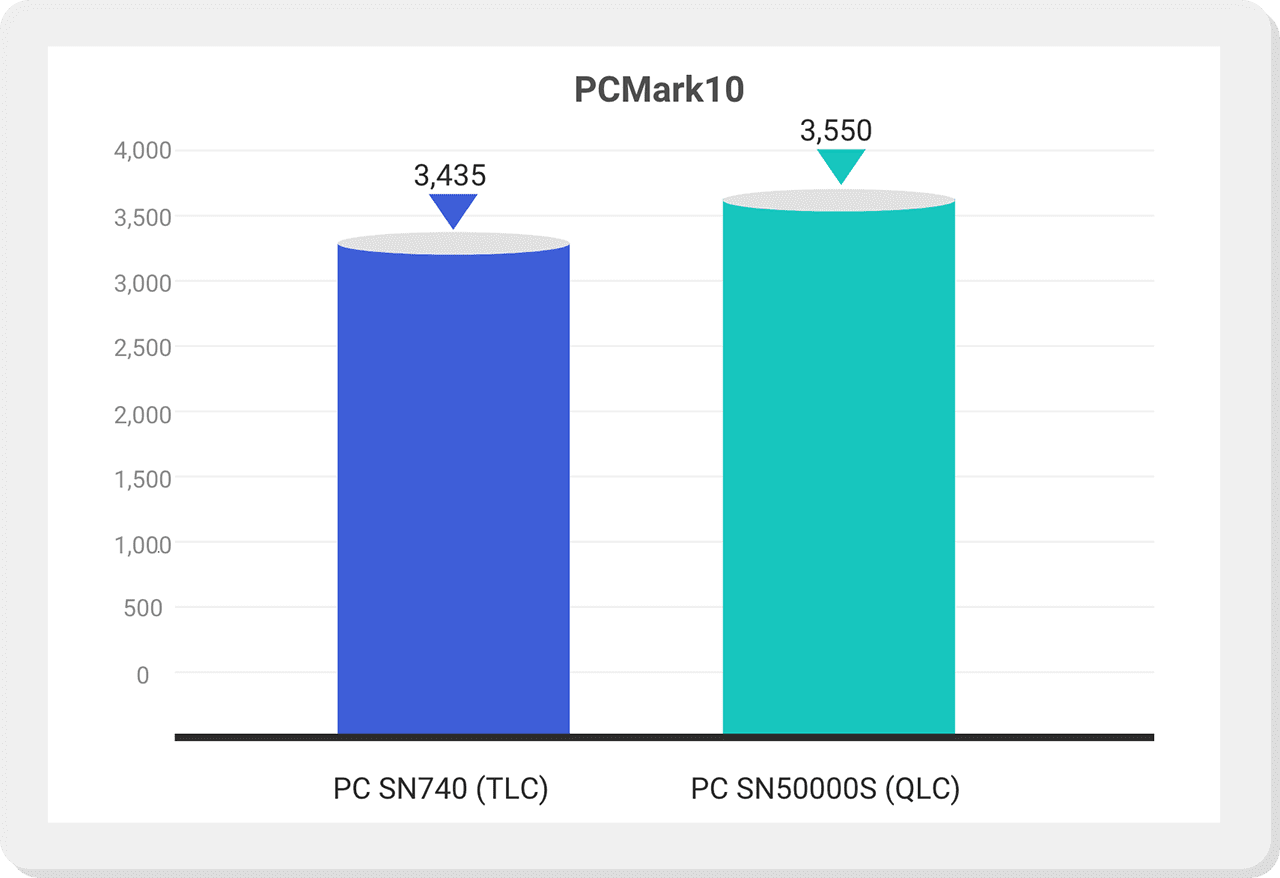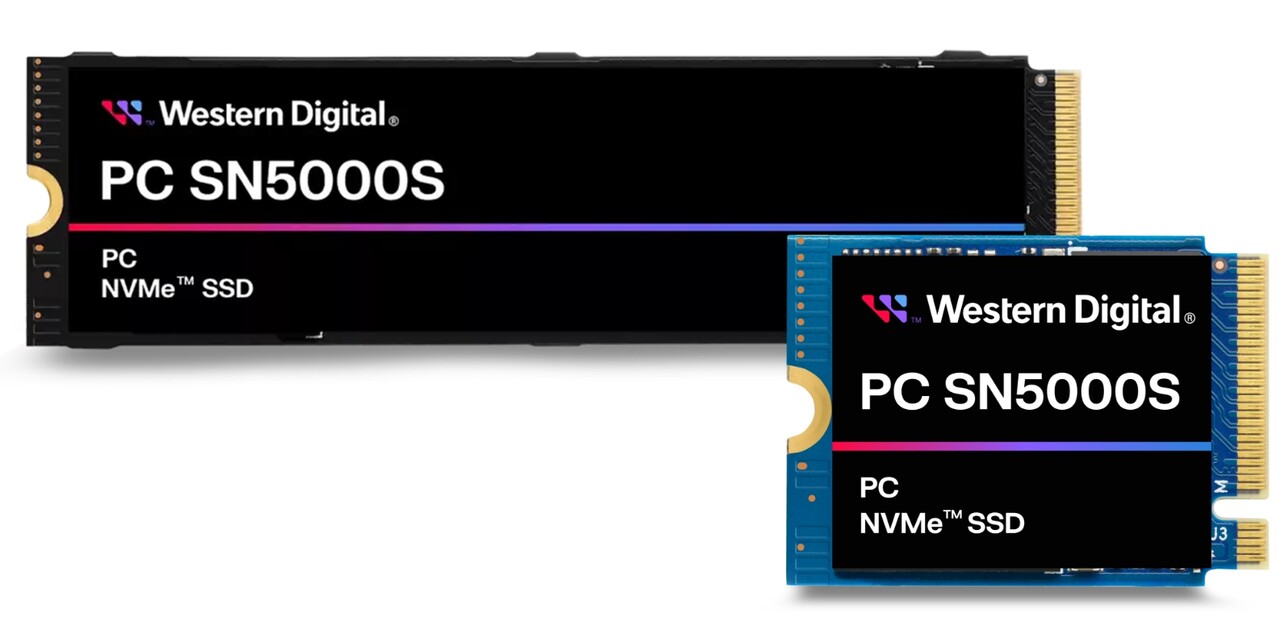QLC Without Compromise
Explore how Western Digital Innovation™ delivers improved bit density without sacrificing performance across QLC drives — like the new Western Digital PC SN5000S NVMe™ SSD.
Learn More About QLC
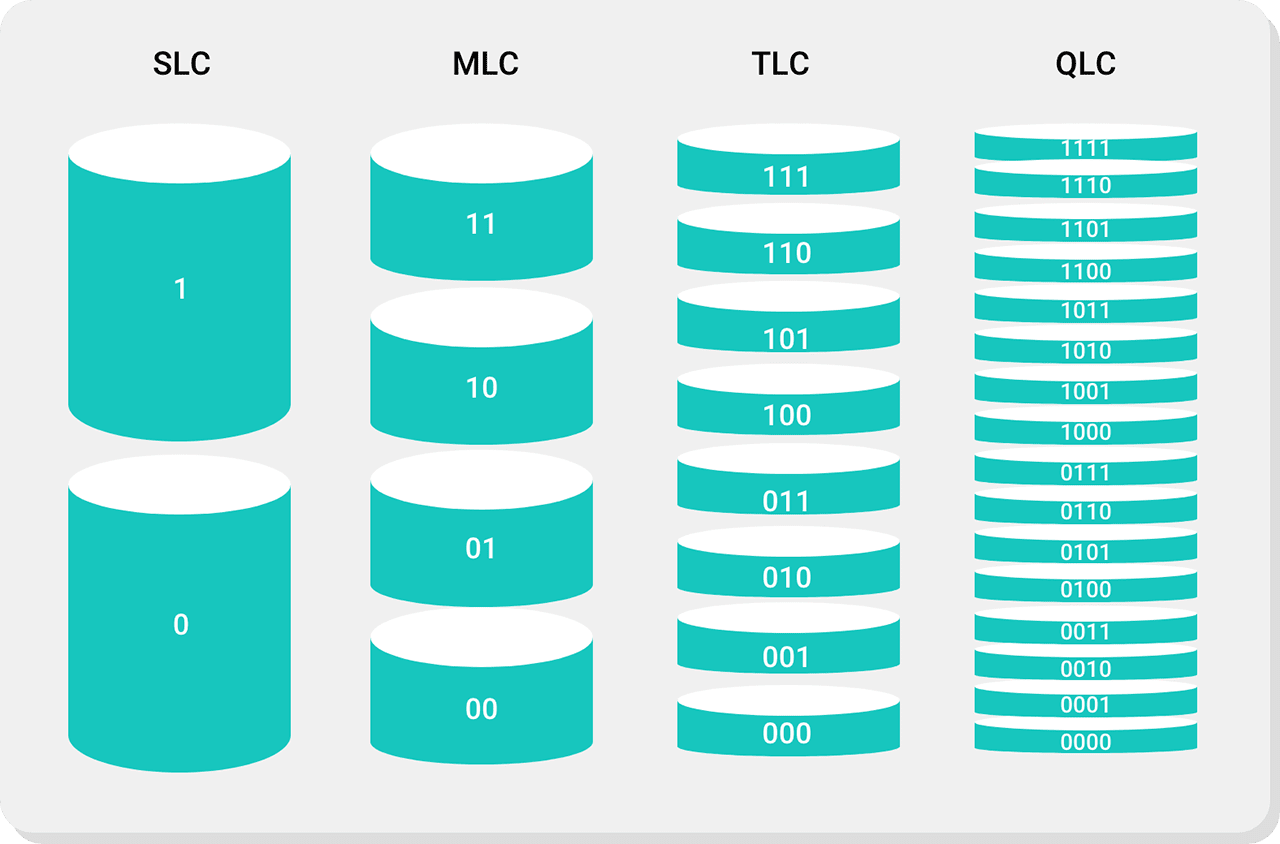
QLC vs. TLC
FQLC and TLC are both important in data storage.
For OEMs and other stakeholders, the right approach depends on each technology’s strengths — and the best results for users depend on knowing how QLC and TLC compare.

Higher capacities
QLC increases storage density by storing four bits per cell, offering more space than TLC’s three bits per cell.

Cost-efficiency
QLC provides more storage per cell than TLC at a lower cost, making high-capacity solutions more accessible.

Read-intensive advantage
QLC shines in read-heavy applications — like reviewing large content libraries and handling demanding business workloads.

Balanced trade-offs
Western Digital Innovation has helped deliver the capacity benefits of QLC while managing its traditionally lower endurance and performance.
Who can benefit from QLC?
If you store data, QLC can help — but QLC can help OEMs in particular. OEMs (original equipment manufacturers) work hard to deliver capable, cost-effective devices for their users, whether those users are managing business applications or organizing their family content.
With QLC flash NAND technology, OEMs can deliver even more capacity for their users. They just need to invest in QLC flash that can balance increased bit density with premium performance.
Why is QLC important?
QLC can store more bits per memory cell than TLC, MLC, or SLC NAND flash. This means they enable more storage capacity in the same total area than earlier cells, lowering the total cost per GB.
As users generate more content, store more data, and consume more information, we need ways to boost capacity and do it cost-effectively. With QLC, storage devices like SSDs can help store more without growing in physical size thanks to improved bit density.
Explore QLC for OEMs
OEMs expect to power over 50% of client SSDs with QLC by 2026.1
Users are generating more content, sharing more media, and saving more data. For OEMs building devices for consumer and business users, QLC can help deliver higher capacities in the same footprint at lower cost per GB.
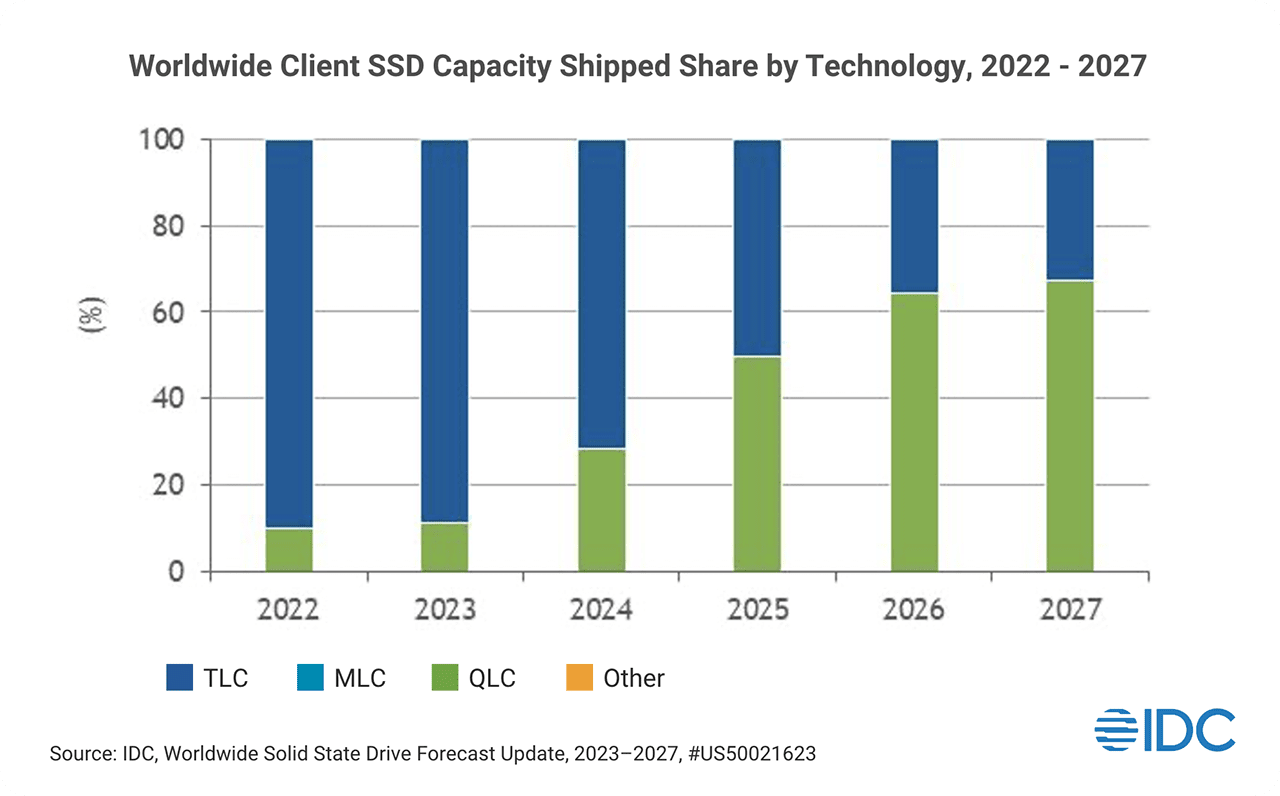
OEMs can optimize QLC with Western Digital’s nCache 4.0.
More bits and higher data rates require more complex architecture to improve data retention, performance, and endurance. Western Digital’s proprietary nCache can help — here’s how:
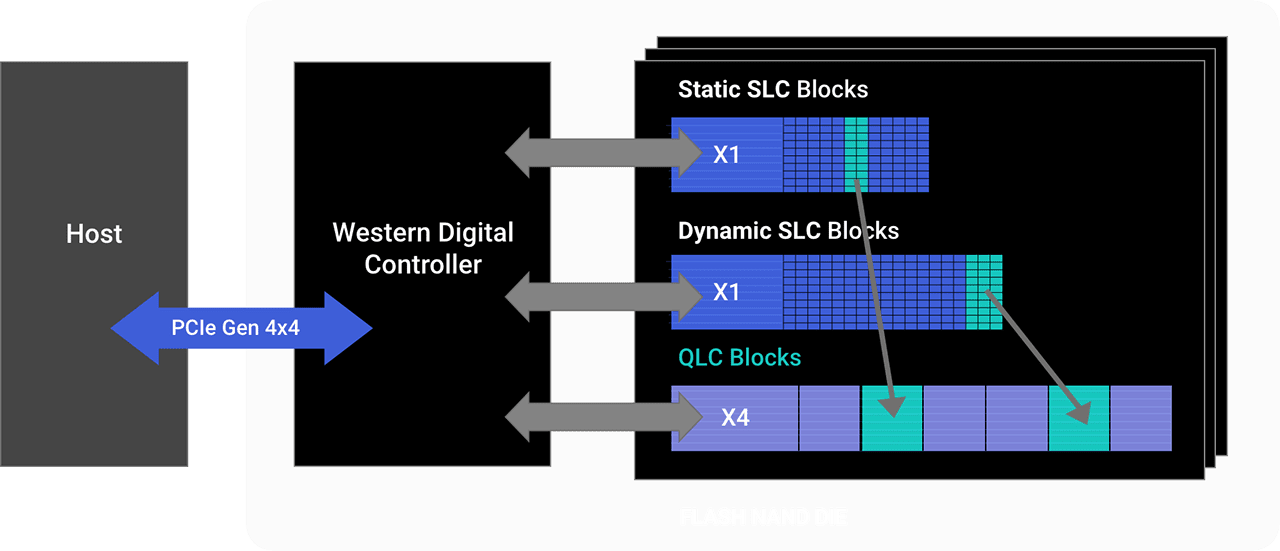
Speed meets capacity
Western Digital nCache 4.0 features dynamic SLC technology, which writes data at high speeds to SLC blocks before copying them to QLC during idle time.
Smart caching
By intelligently managing how data is written to the drive, Western Digital nCache 4.0 helps extend the lifespan of QLC SSDs. This minimizes the wear on memory cells and helps keep data safer, longer.
Diverse use cases
Whether you’re creating content or working on your next professional project, Western Digital nCache 4.0 provides high-speed performance with large capacities.
Cost-efficient capacity
Western Digital nCache 4.0 paired with QLC translates to more affordable, higher-capacity drives, letting users store more without compromising on performance.
Discover QLC SSDs
Questions About QLC?
Contact an expert to learn more about QLC for your team.
Disclosures
1. Source: IDC, Worldwide Solid State Drive Forecast Update, 2023-2027, #US50021623
2. Based on internal testing. Western Digital PC SN5000S Gen 4.0 (BiCS6 QLC) vs Western Digital PC SN740 Gen 4.0 (BiCS5 TLC).
3. Based on read speeds unless otherwise stated. 1 MB/s = one million bytes per second. 1 GB/s = one billion bytes per second. Based on internal testing; performance will vary depending upon host device, usage conditions, drive capacity, and other factors.
4. Comparison based on the Western Digital PC SN740 2TB model.
Product specifications subject to change without notice. Pictures shown may vary from actual products.
Western Digital, the Western Digital design, the Western Digital logo, and nCache are registered trademarks or trademarks of Western Digital Corporation or its affiliates in the US and/or other countries. The NVMe mark is a registered trademark of NVM Express, Inc. PCIe® is a registered trademark of PCI-SIG. TCG Opal is a trademark of Trusted Computing Group. All other trademarks are the property of their respective owners.
